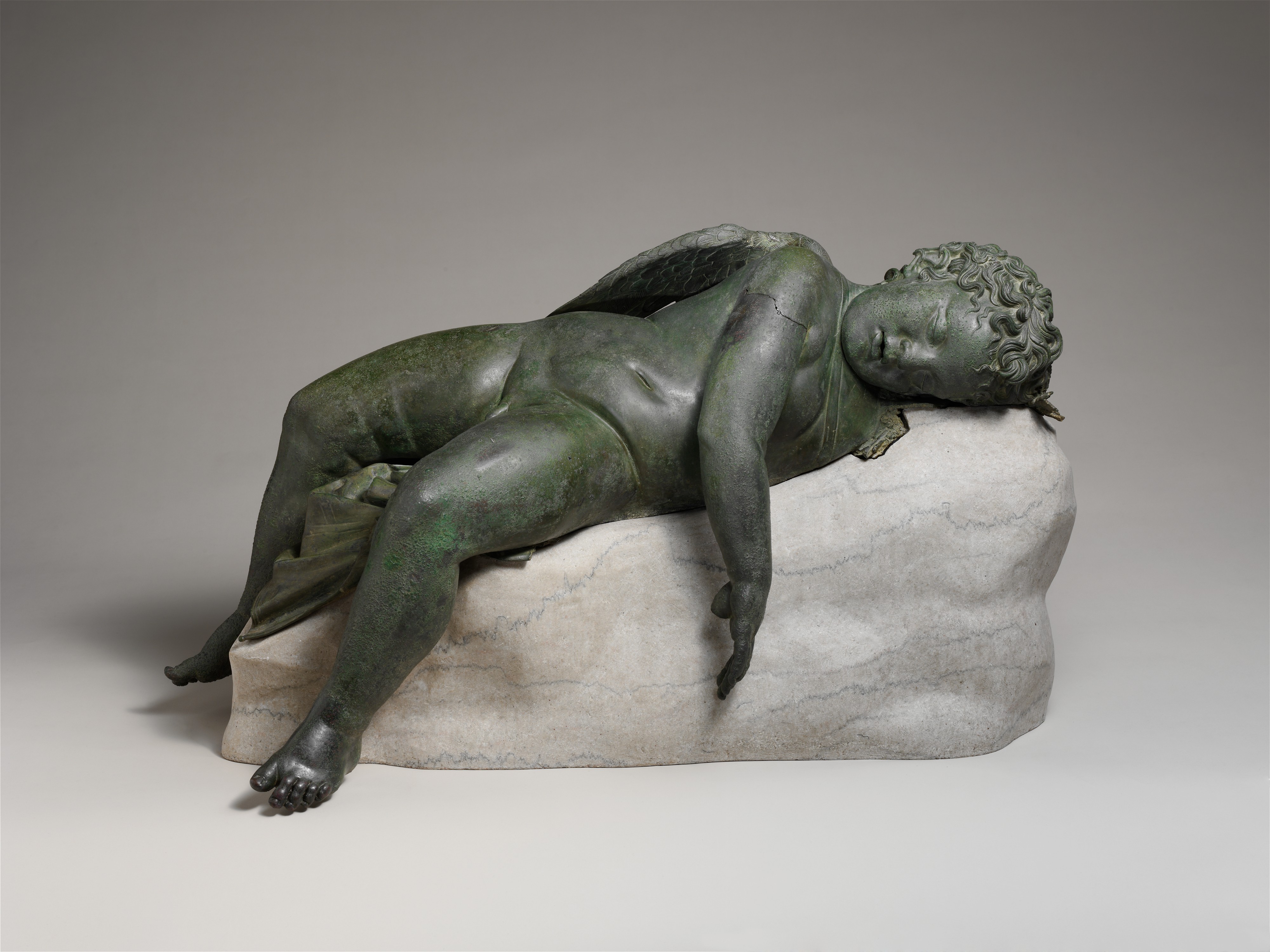21 Chapter 5.4: Hellenistic Art
Hellenistic Art
The Hellenistic period began with the death of Alexander the Great in 323 BCE and ended with the Battle of Actium in 31 BCE when Greece was conquered by Rome. In Alexander’s reign, conquering parts of Africa, Asia and the Near East, Greece became an empire. With no heir upon his death his territory was divided among his generals, some of whom formed kingdoms. One of the most important artistic centers during this time was the kingdom of Pergamon in Turkey. Its kings sponsored large public monuments that introduced a new sculptural style. This section explores the new stylistic characteristics and subject matter that emerged in Hellenistic sculpture.

Bronze statue of Eros sleeping, 3rd–2nd century B.C. Metropolitan Museum of Art. Public Domain.
Hellenistic Art TASK 1
Using the sculpted frieze from the Altar of Zeus, Pergamon, the video below highlights the main characteristics of Hellenistic art by comparing it to Classical art. After watching the video, please answer the accompanying questions.
Hellenistic Greek Art
Hellenistic Art TASK 1 prompts:
Which two characteristics does the Hellenistic share with the Classical?
How does it go beyond the Classical in representing these two characteristics?
In what way is Hellenistic art the antithesis of classical art?
Hellenistic Art TASK 2
Pergamene kings commissioned many public monuments, including a large sculptural group that referenced their victory over the Gauls. The video below explores copies of two of the figures that were part of this group, identifying the Hellenistic elements. After watching this video please answer the accompanying questions.
Dying Gaul
Hellenistic Art TASK 2 prompts:
What are the Hellenistic characteristics of each figure?
How do they differ from one another?
What was unique about this victory monument?
Hellenistic Art TASK 3
One of the key characteristics of Hellenistic art is to explore new subjects. This video explores a Hellenistic representation of a boxer. Although an athlete, his depiction differs from those portrayed in the Archaic and Classical periods. After watching the video, please answer the accompanying questions.
Apollonius, Boxer at Rest
Hellenistic Art TASK 3 prompts:
What is significant about the use of bronze?
How was it constructed?
How does this represent an expansion of subject matter in the Hellenistic?
What does his seated position suggest?

